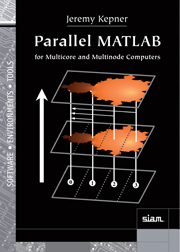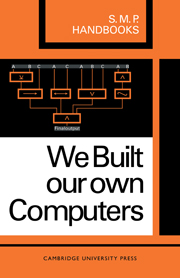Parallel MATLAB for Multicore and Multinode Computers
This is the first book on parallel MATLAB and the first parallel computing book focused on the design, code, debug, and test techniques required to quickly produce efficient parallel programs. MATLAB is currently the dominant language of technical computing with one million users worldwide, many of whom can benefit from the increased power offered by inexpensive multicore and multinode parallel computers. MATLAB is an ideal environment for learning about parallel computing, allowing the user to focus on parallel algorithms instead of the details of implementation. This book is a reference for professional scientists and engineers and will also be beneficial to graduate students and advanced undergraduate students as a textbook for a parallel computing course.
- This book covers more parallel algorithms and parallel programming models than any other parallel programming book due to the succinctness of MATLAB
- Promotes a 'hands on' approach with numerous examples
- Examples are drawn from widely known and well-documented parallel benchmark codes that are representative of many real applications across the field of technical computing
Product details
No date availableHardback
9780898716733
273 pages
261 × 182 × 21 mm
0.68kg
Table of Contents
- List of figures
- List of tables
- List of algorithms
- Preface
- Acknowledgments
- Part I. Fundamentals:
- 1. Primer: notation and interfaces
- 2. Introduction to pMATLAB
- 3. Interacting with distributed arrays
- Part II. Advanced Techniques:
- 4. Parallel programming models
- 5. Advanced distributed array programming
- 6. Performance metrics and software architecture
- Part III. Case Studies:
- 7. Parallel application analysis
- 8. Stream
- 9. RandomAccess
- 10. Fast Fourier transform
- 11. High performance Linpack
- Appendix. Notation for hierarchical parallel multicore algorithms
- Index.




